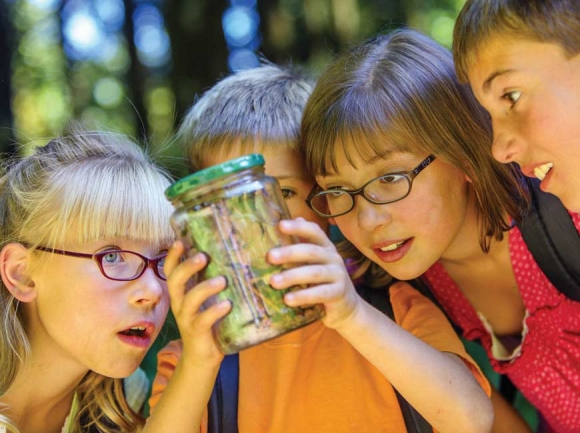Climate change is in our children’s hands

Last Friday, as I watched the U.S. women’s soccer team defeat France at the Parc des Princes stadium, I kept thinking how hot everyone looked. I enjoyed watching the game, but couldn’t help noticing the profuse sweating from players and spectators.
The match took place during a record heat wave for the continent of Europe. Across France, temperatures were reaching numbers as astounding at 115 degrees. Schools shut down, soldiers battled wildfires, villages were evacuated, and elderly folks were suffering heat-induced deaths.
According to a New York Times article, the hottest summers in Europe in the last 500 years have happened within the last 17 years, and the number of heat waves in France has doubled within the last 34 years. Globally, 2019 is on track to be one of the hottest years on record.
Some politicians and other prominent figures say global warming is a myth, that human consumption and greenhouse emissions are not catastrophically affecting our planet. When I hear this, I feel like we’ve slipped into a wartime propaganda age where the government is attempting a mass brainwash tactic.
Fortunately, we have science to support the cataclysmic trajectory of climate change. A recent article published by NASA indicated nine clear indictors of global warming.
1). Global temperature rise: The average temperature of the planet has increased 1.62 degrees Fahrenheit since the 19th century with most of the warming happening in the last 35 years. The five warmest years on record have occurred since 2010 with 2016 being the hottest year in history.
Related Items
2). Warming oceans: Our oceans are working to absorb most of this heat. The top 2,300 feet of ocean water has warmed 0.4 degrees since 1969.
3). Shrinking ice sheets: The Greenland and Antarctic ice sheets are rapidly melting. Between 1993 and 2016, Greenland lost an average of 286 billion tons of ice per year while Antarctica lost about 127 billion tons. The rate of Antarctica ice mass loss has tripled in the last decade.
4). Glacial retreat: Images from space are clearly showing a global glacial retreat. Snowcaps from the Alps, Himalayas, Andes, Rockies, Alaska and Africa are disappearing.
5). Decreased snow cover: The amount of spring snow cover in the Northern Hemisphere has decreased over the past 50 years and snow is melting earlier.
6). Sea level rise: Global sea levels rose eight inches in the last century. The bulk of that increase occurred in the last two decades, and the rate is accelerating every year.
7). Declining Arctic sea ice: The extent and thickness of the Arctic sea ice has declined rapidly over the past several decades.
8). Extreme events: The U.S. has witnessed an increased number of extreme rainfall events. Further, the number of record high temperature events has increased while the number of record low temperature events has decreased.
9). Ocean acidification: Since the beginning of the industrial age, the acidity of the surface ocean water has increased by 30 percent. The more carbon dioxide released by humans, the more absorbed by the ocean. The amount absorbed by the upper layer of the oceans is increasing by about 2 billion tons per year.
Some of these indicators, such as melting ice sheets and ocean acidification, are not evident to the everyday eye, but others are. We can’t deny strange weather patterns, intense rainfall, intense heat and less snow. We’re watching and experiencing global warming in action; yet, some still deny it’s happening.
My 10-year-old son is curious and inquisitive about everything. He asks a lot of questions about anything he hears on TV or the radio. As a child growing up in the age of climate change, he’s nervous and wants to do something about it. We talk about recycling and composting and other daily ways to reduce one’s carbon footprint. Granted, if every person did these things it would make a significant difference, but I feel more than that, we need a shift in our mentality.
I feel what will make the most impact on our children is nurturing their respect for nature, getting them outside and helping them fall so in love with the earth they can’t stand the thought of destroying her. My goal is to teach my sons that our planet is not here for our gluttonous needs. She’s a fragile yet volatile entity that we must handle gently and intentionally.
The ultimate state of our planet sits in the hands of our younger generations, but I’m sure many children don’t know about glacial retreats and warming oceans. We adults need to educate them. How can they make changes if they’re kept in the dark? Open your eyes and open your mouth.
Everything has a lifespan, even Mother Earth.
(Susanna Shetley can be reached at This email address is being protected from spambots. You need JavaScript enabled to view it.)









